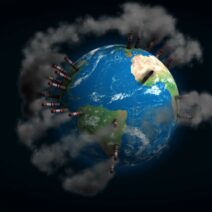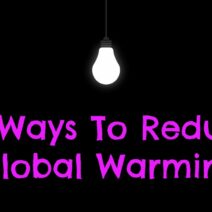In the vast tapestry of Earth’s climate history, wildfires have long played a pivotal role, intricately woven into the fabric of natural ecosystems. However, as climate change accelerates, these infernos are ignited with unparalleled intensity and frequency, reshaping landscapes and communities. This article delves into the symbiotic relationship between wildfires and climate warming, elucidating how rising temperatures serve as a catalyst for increasingly catastrophic fire events.
The mechanics of wildfire behavior are dictated by a complex interplay of factors: meteorological conditions, topography, and fuel availability. Yet, in recent years, climate change has emerged as a dominant force, altering the very conditions that allow wildfires to flourish. As global temperatures escalate, the atmosphere becomes increasingly arid, contributing to prolonged periods of drought. This drying effect renders vegetation more susceptible to combustion, thus transforming once-resilient forests into tinderboxes awaiting ignition.
A stark illustration of this phenomenon can be found in Australia, where scientists have confirmed that climate change has profoundly exacerbated the severity of wildfires. The 2019-2020 Australian bushfire season, colloquially termed “Black Summer,” witnessed unprecedented infernos that razed millions of acres of land and decimated wildlife populations. Here, the scientific community draws a direct correlation between rising atmospheric temperatures and the ferocity of these fires, underscoring the pressing urgency of addressing global warming.
Canada has similarly bore witness to the escalation of wildfires in recent years, culminating in a season of record-breaking blazes that tested the resilience of both local and foreign firefighting forces. Attaching significance to climate change, experts deliberate whether it is the primary instigator behind these large-scale conflagrations or merely a contributing factor in a multifaceted equation. Nevertheless, the overwhelming consensus underscores a grim reality: as temperatures rise, the potential for devastating wildfires grows accordingly.
The ramifications of these ecological calamities extend beyond immediate destruction. The smoke generated by wildfires contains a myriad of harmful chemicals that can permeate air quality over vast distances, exacerbating respiratory ailments and posing health risks to populations far removed from the flames. Furthermore, the soot and particulates released during a fire event precipitate atmospheric changes that can influence regional weather patterns, leading to further climate destabilization. Thus, this cycle of destruction perpetuates itself, demonstrating that the consequences of wildfires extend well beyond the physical fires themselves.
Fueled by the escalating crisis of climate change, one must also examine the evolving narrative surrounding fire management. Traditional firefighting strategies, which often prioritize suppressing flames at all costs, have come under scrutiny. With an understanding that some ecosystems are fire-adapted and depend on periodic burning for rejuvenation, ecological fire management is gaining traction. Controlled burns are increasingly viewed as a vital tool to mitigate the intensity of uncontrolled wildfires. The delicate balance between human habitation and natural fire cycles makes it imperative to rethink our approach to forest management.
In light of these challenges, fostering public awareness and understanding of wildfires is crucial. Education campaigns aimed at highlighting the causes and consequences of wildfires can empower communities to take proactive measures. From creating defensible spaces around homes to developing community-wide evacuation plans, informed populations can significantly reduce risk. Grassroots movements are crucial, as individuals band together to advocate for policy changes that emphasize sustainable practices and prioritize the well-being of the environment.
Yet, amid the grim portrayal of climate-induced wildfires, there arises a flicker of hope. Innovations in technology and data collection are revolutionizing predictive modeling of wildfire behavior. Satellite imagery, drones, and AI analytics are being harnessed to track fire growth and anticipate potential shifts, granting firefighting teams enhanced situational awareness. Such advancements allow for more strategic resource allocation and bolster response efforts, thereby safeguarding lives and livelihoods.
Moreover, a collective consciousness regarding the interconnection of climate, wildfires, and human activity is gradually taking root. Societal shifts towards more sustainable practices can potentially decelerate climate change and reduce the pestilent conditions that foster wildfires. An increasing emphasis on renewable energy sources, conservation efforts, and responsible land use embodies this shift towards a more resilient future. Each of these actions, however small, contributes to a larger tapestry of environmental stewardship needed in the face of escalating climate crises.
As we look towards the future, it becomes increasingly clear that addressing the climate crisis is paramount in mitigating the threat of wildfires. It is not merely a question of fighting flames but rather one of reshaping our relationship with nature. As stewards of the Earth, we must recognize the profound impact our actions have on the world around us. Embracing ecological wisdom and technological advancements can forge a path towards a more harmonious existence with the planet, reducing the incidence and impact of catastrophic wildfires.
In conclusion, wildfires and climate change are inextricably linked, presenting a complex challenge that demands our immediate attention. Understanding their interrelationship fosters collective action aimed at safeguarding our environment and communities. While the flames may rage, the potential for transformation lies within our hands—through conscious choices, innovative solutions, and unwavering commitment to the planet’s well-being.


